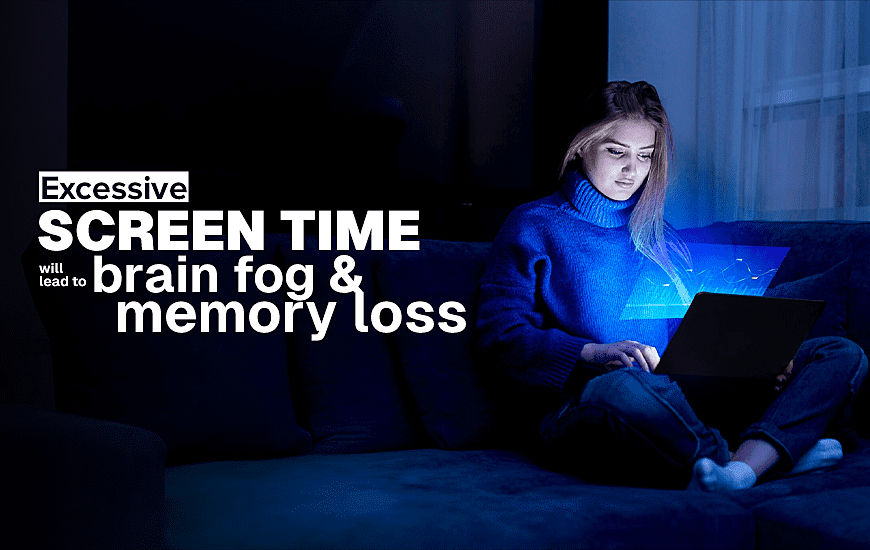
Date: January 10, 2024
We consume more digital content than the number of times we look at the sky on any given day. Except that you are in a picturesque hill station looking at a beautiful landscape, there is a high chance that you are looking at your phone. The sad part is that most people do this even in front of such a beautiful view. This lifestyle choice is now resulting in a dangerous outcome in the form of brain fog, memory loss, and inefficient cognitive functions.
Jessica Elefante, a 32-year-old digital brand strategist, recently experienced brain fog and memory loss due to excessive digital time. The successful digital media professional suffers from symptoms that the existing list of diseases cannot relate to. She got tested for numerous diseases, from Lyme disease to vitamin deficiencies, with no answers. When her husband urged her to take a break from the phone, and she followed, the signs went away pretty quickly. She realized that her digital time had become her mental and physical health’s main destruction source.
The terms being too online or living off the screen are true, thanks to the abundance of digital devices and content that keeps them hooked. The new generation of technology absorbers are the main victims of digital overdose, as they navigate most of their lives using their phones. High screen time, fewer breaks, little to no physical activity, and many other lifestyle choices often lead to what we now call digital overdose.
The main symptoms of digital overtime or overdose are brain fog, forgetfulness, lack of motivation to do any physical activity, sleeplessness, low-quality sleep, anxiety, and, in extreme cases, depression. All these signs lead to a much greater list of diseases that are both chronic and acute in nature.
The best solution is right in your hands, using which you are most probably reading this article. But, if keeping your phone aside completely seems too difficult to be possible, then do this instead.
Take 15-30 minute breaks between extensive phone, laptop, or digital device usage. Ensure that you interact with the physical world, like going out in the sun or taking a small walk. Try increasing real-time social interactions during the break period. It will help the body and brain revive basic cognitive functions and shake off any digital toxins accumulated in the brain.
We are heavily dependent on digital technology to live a normal physical life. Try changing that in the opposite direction, but slowly. Just like smoking, leaving a highly addictive habit of digital consumption can come with withdrawal symptoms. Succumbing to these withdrawal symptoms will make the process even more difficult.
Our brain forms neural links for every activity. Similarly, every digital habit has its unique neural link. The more diverse the usage, the higher the number and strength of the neural links. To break these links, the first step is to break the habit’s continuity. The initial phase is the toughest part of the job. As the neural links grow weaker, the process becomes easier as the urge also becomes weaker.
In a world where not having a smartphone is nearly impossible, we can actively choose to steer away from unnecessary interactions with it. To lead a healthy life, keeping a balance is mandatory. Otherwise, like the millions of people suffering from digital overdose are harming their health silently, we will too.
OpenAI May Soon Launch Google’s Search Engine Rival
OpenAI plans to introduce its fully functional in-house search engine powered by ChatGPT and associated LLMs to compete with Google.

WhatsApp Is Refreshing The App’s UI After Ages
WhatsApp has been consistently adding new features to improve utility offerings. This time, it has refreshed the app’s visual experience.

Google Relaunches Wallet App To Safely Keep Everything Digital
Google has relaunched its latest wallet application in India as a one-stop storage solution for all important non-payment digital assets.

Google Threat Intelligence Will Use Gemini For Cybersecurity
Google Threat Intelligence is the latest introduction by Alphabet INC. and will function as the main cybersecurity layer for its service offerings.
